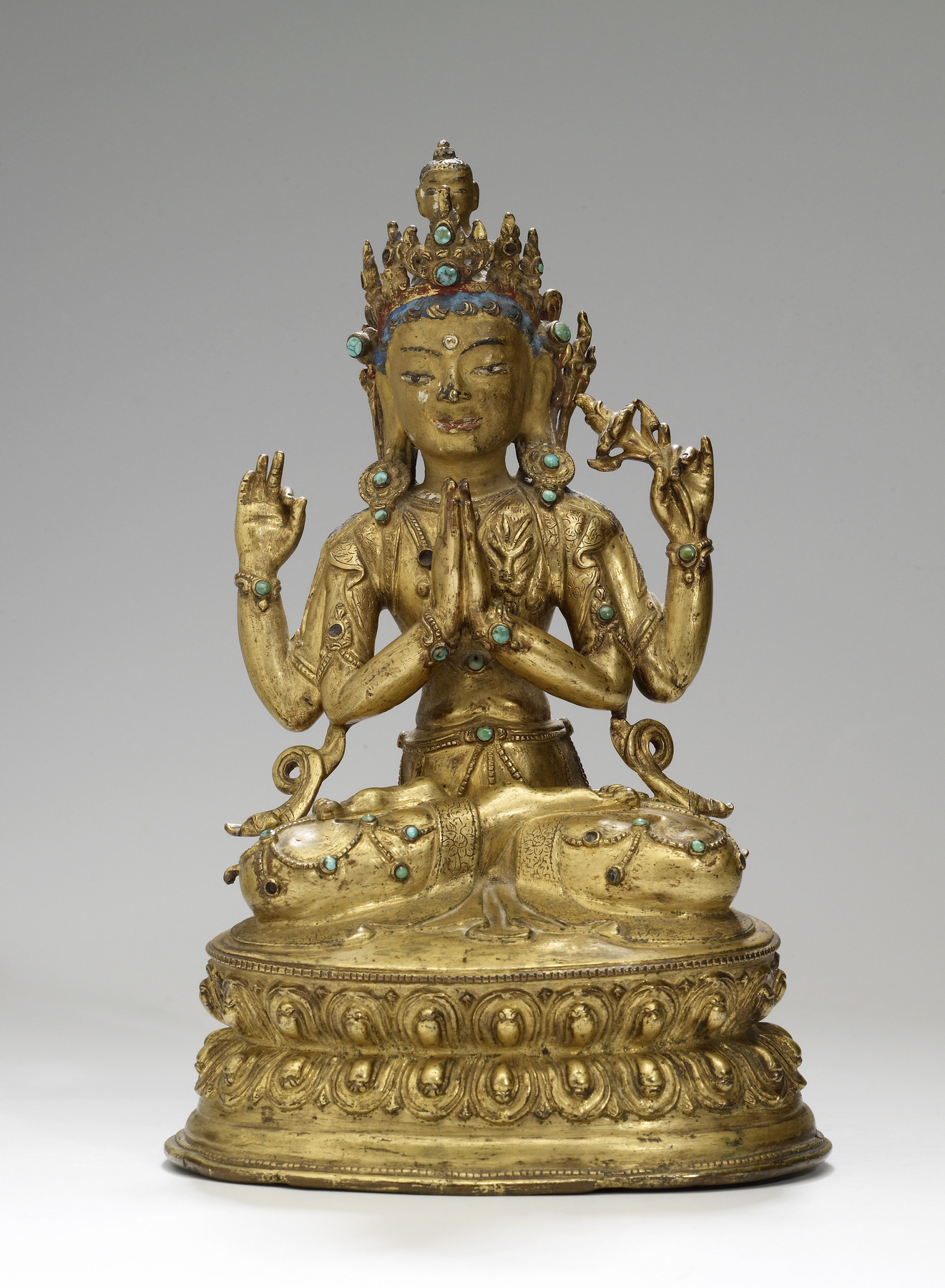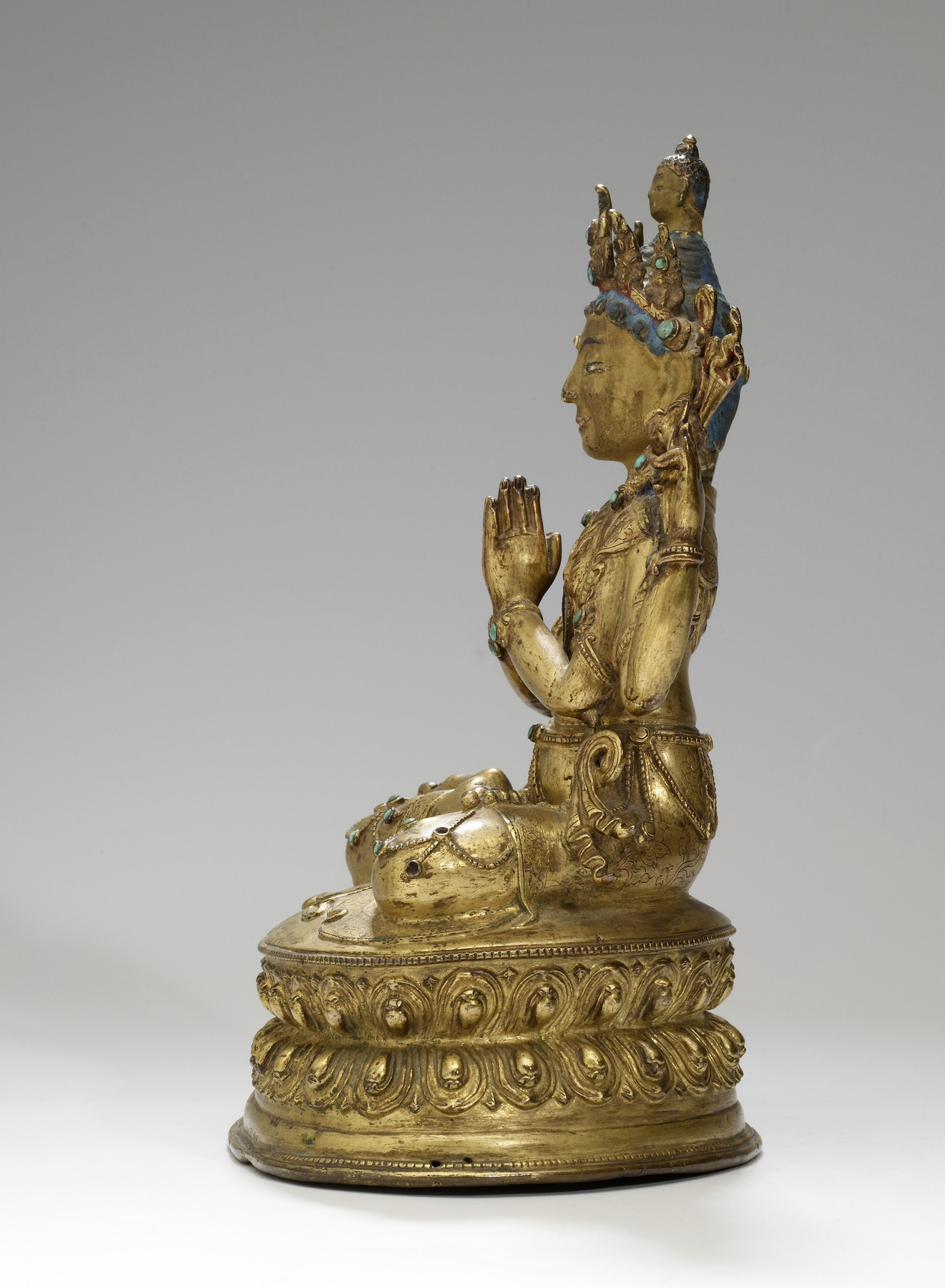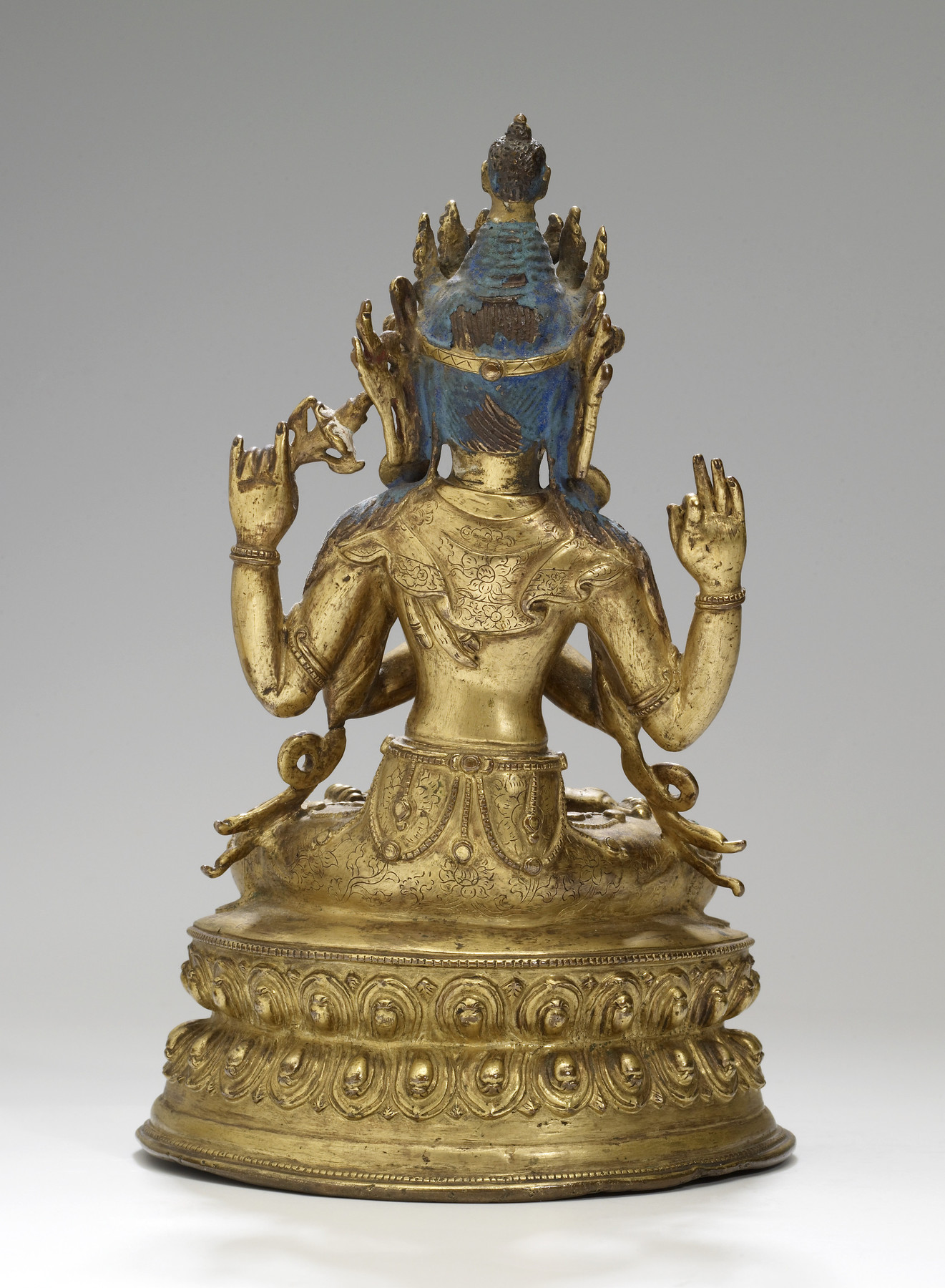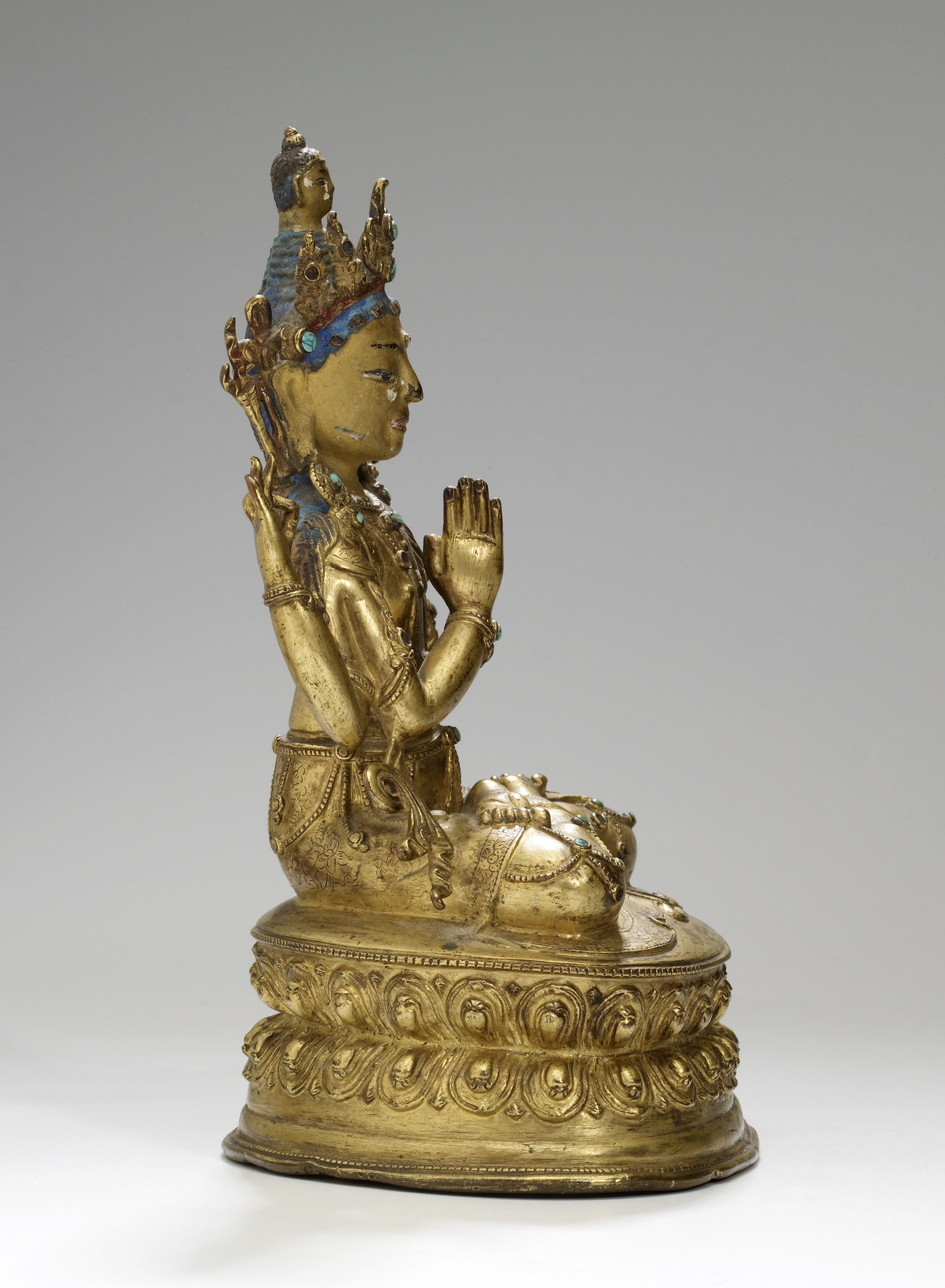Multi-Armed Avalokiteshvara
(India, Nepal, and Tibet)
The positions of this figure’s four hands and the flower he holds identify him as a particular form of the bodhisattva Avalokiteshvara. Known as Shadakshari Lokeshvara, he joins the palms of his two front hands at his heart in the gesture of respectful greeting, and he holds a lotus in his back left hand; his back right hand, now empty, once held prayer beads. As Shadakshari Lokeshvara (“Six-Syllable Lord of the World”), Avalokiteshvara has an especially strong association with the six-syllable mantra devotees recite to invoke him: Om mani padme hum, “Om, Jewel-Lotus One.” The head of the Buddha Amitabha emerges from the top of his piled-up hair, a variation from this Buddha’s usual placement in Avalokiteshvara’s crown.
Provenance
Provenance (from the French provenir, 'to come from/forth') is the chronology of the ownership, custody, or location of a historical object. Learn more about provenance at the Walters.
Purchased by Walter Hauser [1], Charlottesville, Virginia, 1964-65; given to Walters Art Museum, 2016.
[1] Purchased from an unknown dealer or bazaar shop in Kalimpong or Darjeeling in West Bengal
Conservation
| Date | Description | Narrative |
|---|---|---|
| 7/21/2016 | Examination | Examined for accession |
| 7/21/2016 | Examination | The Avalokitesvara is cast from a copper alloy (brass or bronze) with incised decoration, cold paint and semi-precious stones. The copper alloy surface is gilded. The facial areas are pigmented and painted. The hair is blue, lips red and brows black. The skin is first covered with a white ground layer followed by gold powder paint. The space under the pedestal is hollow and may contain prayer scrolls or other material. The bottom is sealed by a sheet of copper with a punched flower in the center. |
| 7/12/2017 | Treatment | Treated for exhibition |
| 7/12/2017 | Treatment | The paint on the head had some minor losses and lifting areas. The fragile areas were consolidated with a butyl methacrylate adhesive that did not cause any visual change in color, matte surface or general appearance of the paint. |
Geographies
Tibet (Place of Origin)
Measurements
H: 7 5/16 × W: 4 5/16 × D: 3 9/16 in. (18.6 × 11 × 9 cm)
Credit Line
Gift of Walter Hauser, 2016
Accession Number
In libraries, galleries, museums, and archives, an accession number is a unique identifier assigned to each object in the collection.
In libraries, galleries, museums, and archives, an accession number is a unique identifier assigned to each object in the collection.
54.3100












